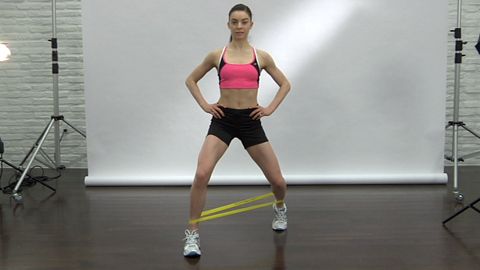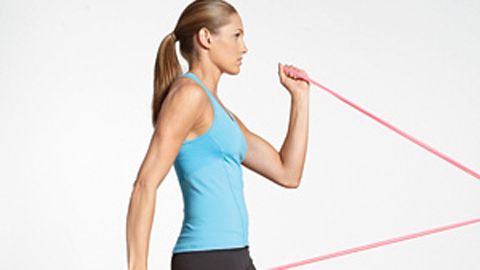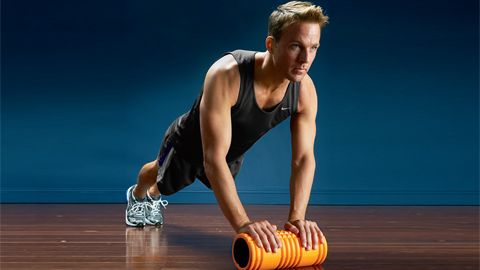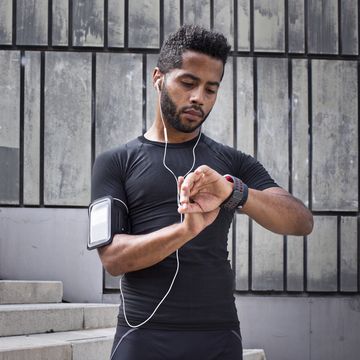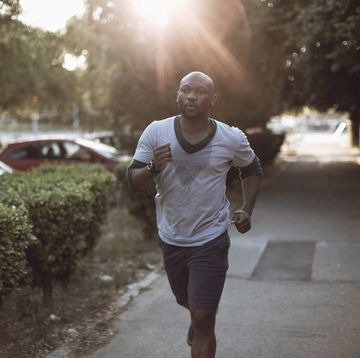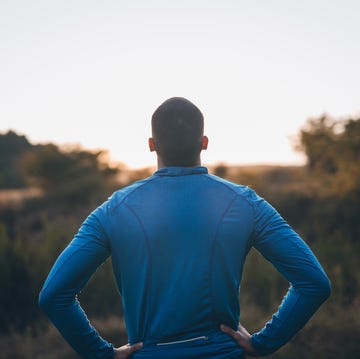Hi Susan-
I will be training for Big Sur, my first marathon, this spring. I want to add strength training twice a week to my running routine. Are there any specific exercises you would recommend? I do not belong to a gym, but I have plenty of weights and things at home I will use. In addition to strength training, I was thinking of also adding cycling on Mondays, Wednesdays, and maybe Sundays. What do you think?
Melanie
Dear Melanie-
Great selection on your first marathon! This will be a very memorable first marathon. Kudos for thinking ahead and wanting to prepare adequately for a demanding race!
Strength training is a great idea for all runners, period. But, given a challenging marathon course, it's even more important. In addition, cross-training can be an effective training tool as well, especially if you are following a three or four day-a-week running plan. Just one word of caution though, know that you have taken on a lot of training for your first marathon, so please make certain you have adequate recovery time scheduled into your training too!
RELATED: Run your first—or fastest—marathon ever! Train smart with the Big Book of Marathon and Half-Marathon Training.
First of all, hills are a great form of strength training so your training plan should include plenty of hill runs. Start by checking out the course profile of Big Sur and see if it is possible to find any hills in your area that are of similar incline and/or length. Next, create a good hill route that you can use frequently to train on, meaning at least once every one to two weeks. If there are no hills for you to use, resort to the treadmill, bridges, and parking garages to simulate the incline.
Here are two hill workouts for you to consider adding to your run plan.
- Hill Repeats - Include a 1- to 2-mile warm up and then hit your chosen hill. Run up the hill and focus on your form by picking up your knees and pumping your arms. At the top, relax, shake out your arms, breath deep, and use the downhill portion as an easy recovery run. Turn around and tackle the hill again. Do several repeats and gradually increase the number of repeats you are able to run each time.
- Downhill training - It's also important to work the downhill portion of a hill too. Descending feels easier, because it is easier on our heart and lungs, but the downhill portion is much harder on our muscles. Running downhill requires eccentric contractions of the lower body muscles. Eccentric contractions mean the muscle lengthens while under great tension. This causes small micro-tears in the muscle tissue. In proper doses, this results in making the muscle stronger but it does leave us sore afterwards until we adapt.
For a downhill workout, look for a hill with no more than an 8 percent slope. Too steep of a slope increases your risk of injury, so start easy! Relax on the way up the hill, keeping the pace easy as you climb, and then work it on the way down. Downhill running form is important too. Keep an upright posture, lean slightly forward, keeping your upper body over your hips. Avoid the tendency to lean backwards and slow down. Shorten your stride to keep your hips under you, and quicken your cadence. Try to land more mid-foot and avoid using your heel as a brake. Keep your knee slightly bent on your landing leg to minimize the impact. Keep your eyes on the road, just ahead of your feet.
For weight training, I prefer lifting on the same day as a run. For example, during the week, if you run Tuesday and Thursday, lift weights on those days too. This way, you will be able to plan for recovery. If you alternate running days with weights, every other day, there is no down time for your legs between workouts. It's best to run first, then lift weights after the run. You can lift weights right after your run or opt to do weights at the end of the day. The fatigue from running before lifting will probably mean you use lighter weight but that's ok. Doubling up will help make you stronger.
For specific exercises, target movements that engage the large muscles of the lower body, like the gluteal muscles, lower back, quadriceps, hamstrings, calf muscles, and hip flexors. Try Squats, lunges, walking lunges, step ups, and calf raises, which are all good lower body exercises. These exercises can easily be done at home with dumbbells too.
Strengthen your upper body too because a strong upper body helps maintain good posture and running form during the marathon. Upper body exercises that you can do at home with dumbbells include lateral raises, overhead press, chest press, one-arm rows, and biceps and triceps.
And, of course, include core exercises too! Planks, side planks, sit ups, reverse curls, and abdominal curls will help improve your running form, reduce your risk of injury, and make running hills easier. They are also very easy to do at home!
Cross-training can be beneficial to runners too, especially when combined with a 3 or 4 day-a-week running plan. If running 3 or 4 days a week, include aerobic cross-training two days a week at an easy to moderate intensity level. Please make sure you are including at least one day a week completely off for recovery though. Start by adding 1 day a week of cycling and note how your legs feel when running the next day. It's important to make sure you have adequate recovery time before adding a second day of cycling. If you feel fatigued, burned out, experience heavy legs, notice aches and pains, or your running suffers, cut back the cross-training. Quality is more important than quantity.
All the best to you!
Susan S. Paul, MS
***
Susan Paul has coached more than 2,000 runners and is an exercise physiologist and program director for the Orlando Track Shack Foundation. For more information, visit www.trackshack.com.
Have a question for our beginners experts? Submit your question in the beginners forum here.

Susan Paul has coached more than 2,000 runners and is an exercise physiologist and program director for the Orlando Track Shack Foundation. For more information, visit www.trackshack.com.

